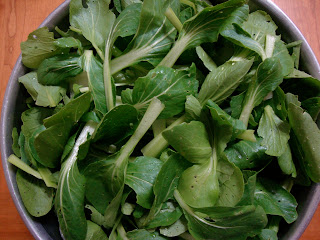The only problem with this system is that I never get to be the future self. I work for her, I plan for her, and, most of all, I worry about her, but she is always a minute or a day or a lifetime ahead of me. Every once in a while I have to take a break from the future self, to spend some time appreciating what the past self has done for the present self, or otherwise this future-oriented system gets too exhausting. So, today, with one year ending and another year, with all its associated goals and plans and worries, about to begin, I'm pausing to reflect on what my past self built in the fall of 2010.
Here is the before picture, taken on the first day of fall:
 |
| Front yard on September 23, 2010 |
On the first day of fall, which still felt like the middle of summer, I went into the front yard with a shovel and a yard-waste bag and thought I would make a morning of it. Two and a half weeks later, I was finally done turning that section of yard into a dirt patch. I got a serious farmer's tan in those two weeks, with tan lines not only where my t-shirt sleeves and neck ended, but also unevenly across my face, with darker freckles on the right side of my face, the side that was usually oriented to the south as I dug up the yard, working from the sidewalk on the east toward the front porch on the west. I had also gotten to know the grubs that live in the soil and made friends with the grub-eating birds that hang out on the power lines above the street.
 |
| Front yard on October 10, 2010 |
I know that once the yard was dug up, I was anxious to turn my dirt patch into a garden. I wanted to plant! Even so, I am amazed to look back and realize that I built three retaining walls in two days. Apparently the late summer heat had gotten to my head. Each wall was composed of 33 bricks, each of which weighed 22 pounds, and each of which I moved from the pallet at the store to a cart, then from the cart to the bed of Lee's truck, then from the truck to the wall in the front yard. At the end of the second day of wall building, my back was sore and my uneven tan was deepened, but I felt hugely satisfied to see three level walls crossing my new garden space. I finished preparing the garden by digging compost and peat moss into each of the beds. Finally, I raked the amended soil into level beds, mulched the pathways between the beds, and went to find my seed packets.
 |
| Front yard garden on October 14, 2010 |
I planted seeds on October 15, in the middle of Austin's fall-planting window for lettuces, spinach, kale, and other cold-loving greens. Germination was quick – within a few days for the Brassica clan – and high yielding. Within a week I had dense rows of seedlings from all but the slow parsley seeds. Within two weeks, the seedlings were growing their second and third sets of leaves and, in doing so, taking on individual personalities. At the same time, weeds began to germinate in the open spaces, and the neighborhood cats and dogs were loving the new green space.
 |
| Front yard garden on November 1, 2010 |
With the intense first weeks of seedling-germination behind me, I was able to water less frequently and take time to pull the weeds from between the rows of greens seedlings, which were quickly growing into baby greens. About a month after planting, I was harvesting baby greens for salads, enjoying the mix of baby spinach, kale, chard, beet greens, Asian greens, herbs, and lettuces. The greens continued to grow quickly, graduating from packed to crowded to should have been thinned a long time ago in a matter of weeks.
 |
| Front yard garden on November 15, 2010 |
In mid-November, the work of gardening shifted from the garden to the kitchen, where I was spending hours trimming and washing greens to make into salads or cook into meals. When the freeze-season began, I mulched between the rows of greens with leaves from the backyard, which further reduced my watering schedule. Now, at the beginning of "winter," the garden is entering the quiet month of slower growth and periodic overnight freezes. Hopefully in this slower time I can catch up on the work of harvesting, washing, and eating all those greens.
Here is the after picture, taken on the second day of winter:
 |
| Front yard garden on December 22, 2010 |










































